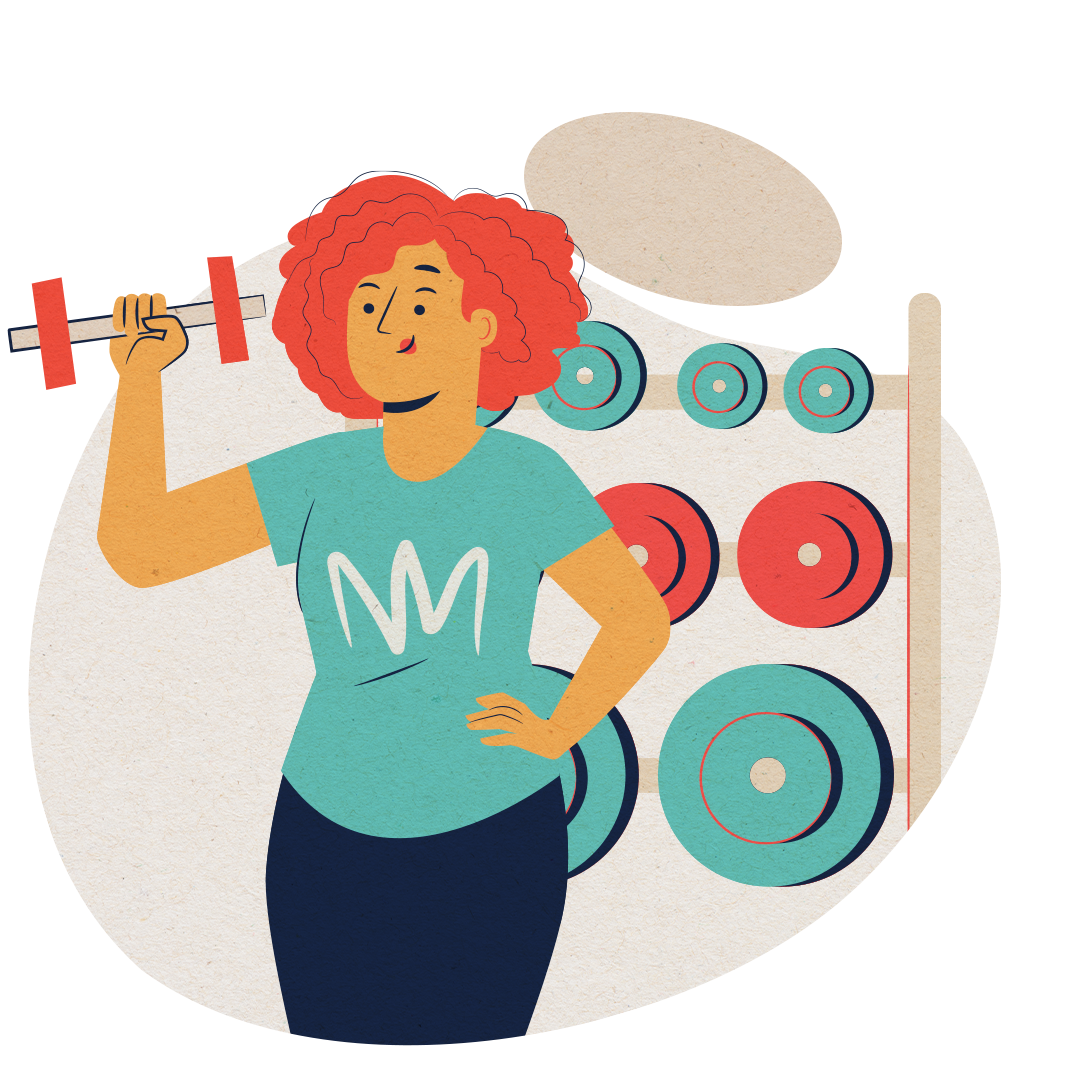
The Best 8 Low Impact Exercises to Increase Longevity No Matter Your Age
What comes to mind when you think about the word exercise?
Do you picture someone running a 5k? Or someone doing burpees at football practice? While these are both great ways to get your workout in, you might take comfort in the fact that these are not the only effective ways to exercise.
Low impact exercise can give you the same health benefits as more intense workouts and in some cases may even be better for you. There are a handful of reasons why you might steer away from high impact exercises. The primary one being as you age, your joints and muscles lose their ability to withstand high impact without risk of injury.
Dr. Gabrielle Lyon, renowned physician & founder of the Institute of Muscle-Centric Medicine, puts the benefits of low impact exercise simply: “Low impact does not mean low effort. The strength of the load carried is not as important as HOW the load is handled.”
If you’ve been searching for reasons to give low impact exercise a try, this article will describe the best exercises you can do as well as the many health benefits you will receive.
The Best Low Impact Exercises and How They Can Benefit Your Health
Don’t let the name fool you, low impact exercise can range from mild to intense. Low impact does not refer to the intensity of the workout, but rather the load and weight you place on your joints during the exercise. Running and jumping are hard on your joints, so they aren’t included in low impact exercises.

It’s important to make the point that people with musculoskeletal injuries or mobility issues should consult with a doctor before engaging in any new physical exercise. Even though these are low impact exercises, all bodies are different, and some need specific instruction on how to exercise to avoid aggravating any conditions or causing injury.
Swimming
Swimming is the fourth most popular form of exercise in the United States, and it’s no surprise why. It is the ultimate low impact exercise for those who wish to protect their joints and bones from injury during workouts. Swimming burns almost as many calories as running but without all the stress running puts on your joints and bones.
One of the greatest benefits of swimming is that it works out your entire body from head to toe. It builds muscle tone, strength, and endurance, and it increases your heart rate without putting additional stress on your body. You can even focus on specific muscle groups by incorporating different strokes into your exercise. Some common strokes to work out the main muscle groups include breaststroke, butterfly, and backstroke.
The health benefits of swimming are so profound that research may even indicate swimmers have half the risk of death due to health-related issues as opposed to inactive people, while other studies have shown swimming helps lower blood pressure and control blood sugar levels.
In fact, there may be evidence that suggests swimming can even give you a better night’s sleep. In a study on older adults with insomnia, the participants reported a boost in both quality of life and sleep as a result of regular aerobic exercise. This is great news since nearly 50% of older adults suffer from insomnia.
There’s been so much research done on swimming and its many benefits! We learned about yet another study in which researchers in Taiwan surveyed a group of 101 adults before going for a swim. Of these 101 adults, 44 of the participants claimed they were suffering from depression or stress as a result of their fast-paced lifestyle. When they were surveyed after going for a swim, only 8 people still claimed to be stressed. That’s an effective antidepressant! The psychological benefits of swimming don’t stop here, however. Scientists evaluated a group of seniors with dementia over a 12-week aquatic program and saw a major improvement in mood.
It isn’t uncommon for a doctor to recommend swimming as a form of physical therapy to people who have suffered an injury or have arthritis. One study even showed that people with osteoarthritis reported significant reductions in joint pain and stiffness after swimming.
Obviously, if you are new to swimming, don’t just dive in without any preparation! Consider taking a few swimming lessons before using the activity as a workout to avoid any danger. Once you have the basics down and feel comfortable in the pool, try swimming laps for 20 to 30 minutes at a consistent pace you feel comfortable with.
High-Intensity Interval Training (HIIT)
You’ve probably heard of HIIT before, but did you know it does not have to be high impact? A common misconception about HIIT is that you have to push your body to its absolute limits with endurance and weight, but the reality is that you can receive just as many benefits from HIIT by doing only low impact exercises.
HIIT is defined by intense bursts of vigorous exercise followed by a period of rest. Instead of doing a round of burpees for your HIIT, try doing a stationary body plank to achieve the same level of intensity but without the stress on your body.
Join In 200 Million+ On The Journey to Greatness
Walking
Perhaps the simplest and most accessible low impact exercise, walking is an excellent (and free) way to get your CDC-recommended 150 minutes of moderate exercise per week. This doesn’t limit you to moseying along at a snail’s pace — there are several minor tweaks you can make to increase your heart rate while walking.
Try walking at an incline on your treadmill or up a hill to benefit more from this exercise, and increase the distance or speed at which you’re walking to really kick it up a notch. More than the obvious physical benefits, walking can do wonders for your mental health too, so consider going for a daily short walk around the block or at a local park for a little extra mood boost.
Cycling
Whether on a stationary or a real bicycle, cycling is a great option for low impact exercise. It allows you to get a great cardio workout in without putting tons of stress on your joints — not to mention you get to enjoy the outdoors while doing it!
It’s important to keep in mind cycling may not be the right choice for everyone. Some people, particularly those with knee problems, may find discomfort in the motion required to ride a bicycle. If any exercise — including low impact exercises — causes you pain, stop and consult a medical professional.
Rowing
What about people who want a really effective upper body workout but without the stress or danger of lifting weights? Rowing is the perfect option for people who want to gain upper body strength and improve endurance. Not only will rowing make your arms stronger, but it’s a great candidate to get your cardio in as well.
Pilates/Yoga
Though you might not get a huge cardio workout from Pilates, this low impact form of exercise is perfect for people who need to be gentler on their bodies. Seniors, people with arthritis, and pregnant women are all prime candidates to reap the benefits of pilates. A review published in the Archives of Physical Medicine and Rehabilitation looked at 16 studies involving all healthy people and found “strong evidence” to support the claim that Pilates is an effective way to improve flexibility and balance.
Kettlebell Training
Free weights are the standard tool people use to strengthen their muscles, but there’s another kind of free weight called the kettlebell that allows more dynamic movements. These free weights are perfect for those who want to gain strength without all the stress that many standard strength training exercises put on your joints.
Elliptical
One of the staples of any gym is a row of ellipticals. These popular workout machines are excellent for low impact training, especially cardio. Most elliptical machines have arm handles that you can use to work out your upper body while you’re getting your cardio in. A nice added bonus for using the elliptical is the workout they give your glutes! A study was done examining elliptical training at various speeds and strides and found that every one of the exercises engaged the gluteus muscles more than walking.
Low Impact Exercise Can Be for Anyone!
Low impact does not mean low effort. The strength of the load carried is not as important as HOW the load is handled. – Dr. Gabrielle Lyon
Even if you do not suffer from a chronic health condition, low impact exercise is an excellent way to begin an exercise routine that you’re comfortable with. For example, you could start out with some light yard work like gardening and slowly work your way up to some more intense outdoor work. You could consistently walk a certain route every day with the goal of speed-walking once or twice a week.
The most important thing to remember is that all bodies are different and require different things. There’s absolutely no shame in giving your body the kind of exercise it needs. The best part about low impact exercise is you can get creative with it! Once you find the perfect workout for your body, make it fun and something you enjoy. Put on your dancing shoes and go to a ballroom, throw a blanket down at the park and do some yoga in the sun, or pick up that tennis racket and head for a quick game with a friend at your local park.
The exercise you enjoy doing is likely to be the one you continue doing, so don’t stop until you find the perfect exercise for you!
Greatness Authors
Greatness Authors is a collection of writers, thinkers, curiosity experts, and students of the world who are committed to bringing you the most up-to-date, impactful, and inspiring information surrounding Greatness topics.

Do You Have to Be a Morning Person to Be Successful? Here’s What Both Sides Have to Say

9 Reasons You’re Tired All the Time & How to 10x Your Energy

How to Have a Healthy Romantic Relationship Even if You Share Different Beliefs

The 7 Best Vitamins to Naturally Promote Better, Uninterrupted Sleep According to Shawn Stevenson

The Science of Forming Healthy Habits & Letting Go of Bad Ones, According to Author James Clear











